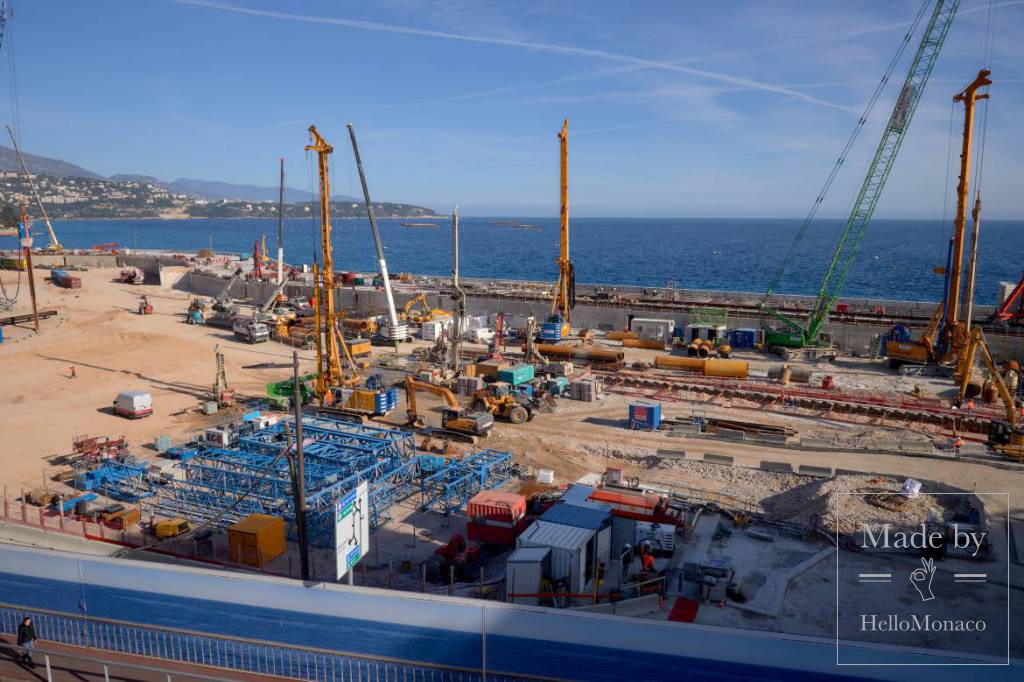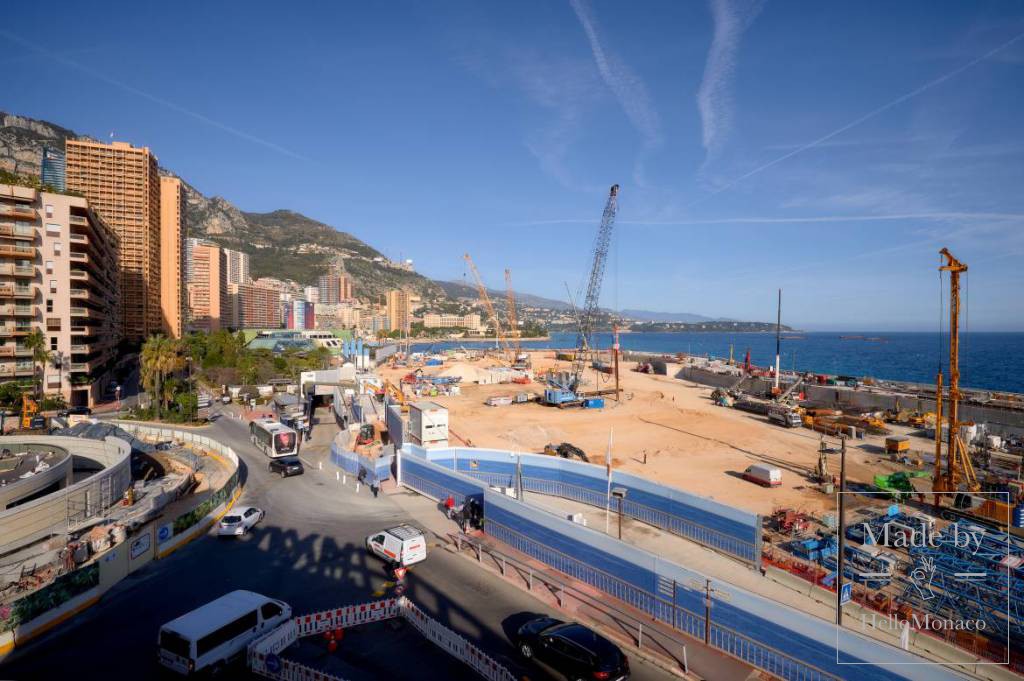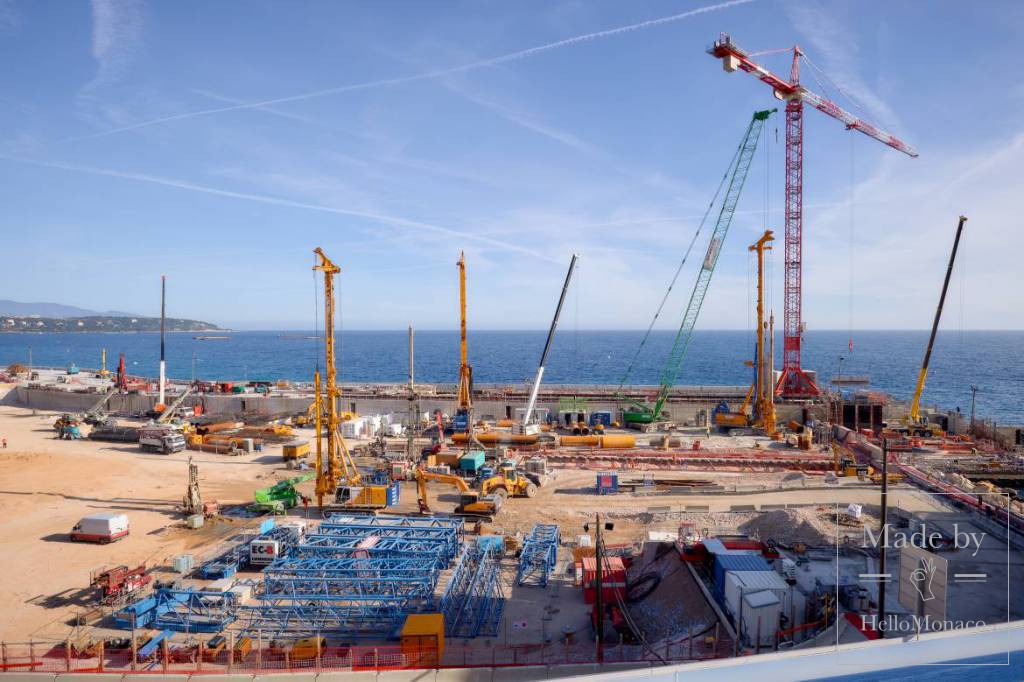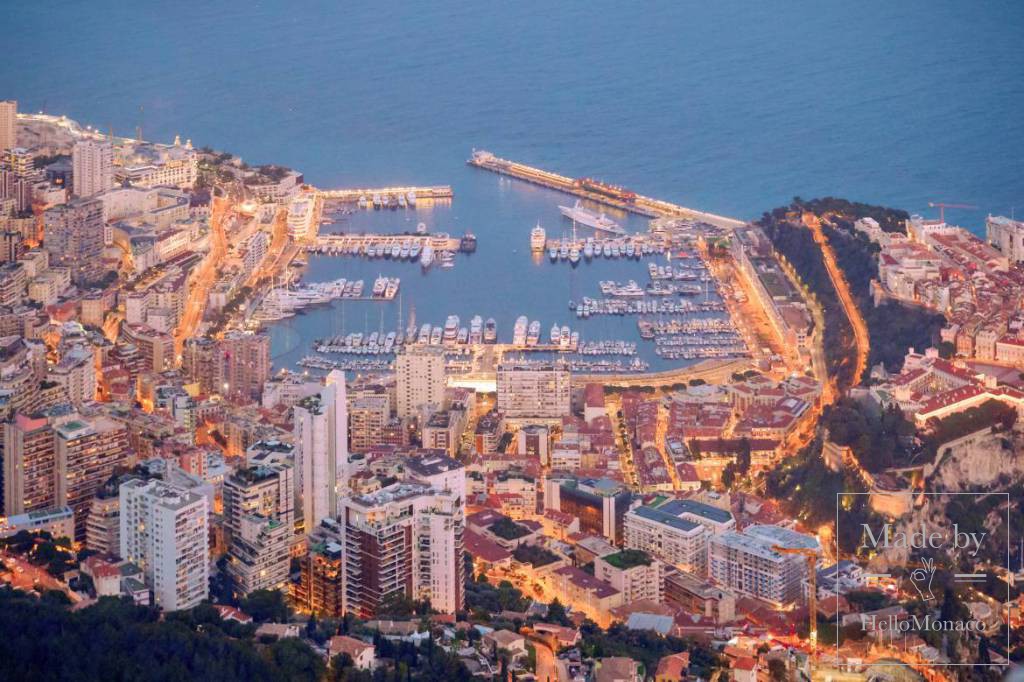Anse du Portier: an essential reconstruction of the urban landscape
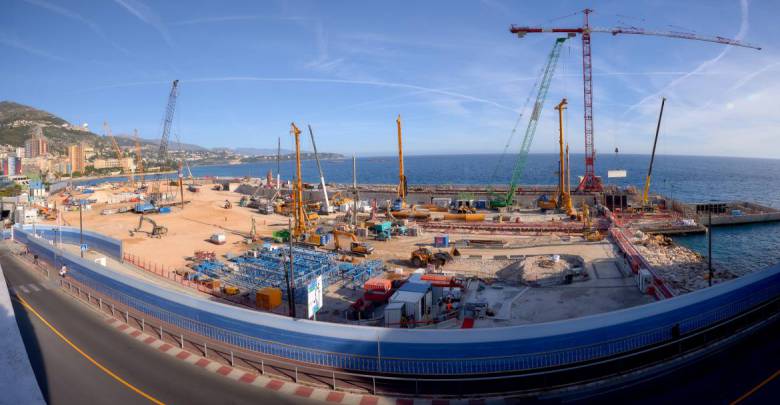
«Monaco must find the means to ensure its growth and development while being mindful of the environmental impact they may have… Building on the sea while preserving the environment…». This principle, defined by H.S.H. Prince Albert II himself, is the philosophy and golden rule of this new extension of the Principality’s territory. It has led the designers and builders of the project to imagine and implement innovative methods for its realisation.
Mid-December 2019 symbolically marked the completion of the land of the Anse du Portier district. On 17th December, earthmoving machinery completed the filling of the 440,000 m3 lake that had formed inside the belt of caissons. It only took nine weeks and the addition of 750,000 tonnes of sand to complete the filling operation. The extension of the Principality’s territory is now a reality.
Since the start of the project environmental issues have been taken into consideration before be- ginning each step in the implementation of the project. Engineers, architects and environmental specialists have thus developed their solutions based on the triptych Avoid, Reduce, Compensate, to:
- limit the impact of preparatory works by adapting operations to environmental conditions (displacement of species and adaptation of the shape of the maritime infrastructure among others),
- reduce this impact during the course of the work (implementation of suitable devices and methods: anti-turbidity screens and acoustic screens),
- compensate by attributing ecological functionalities to the designed structures to help restore the ecosystem present prior to the work.
This principle is unprecedented in a construction site of this scale (six hectares) and complexity (construction at sea from -50 metres).
The caissons of the eco-district’s protective belt have a crucial role.
These structures, which are for the most part submerged, are located between depths of -20 metres and the surface, an area that is very important for marine biodiversity.
They have two functions:
- protecting the eco-district from the power of the swell and the waves,
- integrating devices that can accommodate life.
Hydraulic engineers and environmental engineers have therefore worked together to de- velop solutions that satisfy both:
- the mechanical criteria essential to contain the effects of the sea on the structure,
- ecological measures to encourage the colonisation of the submerged parts by fauna and flora.
On land, the architects are introducing an autonomous ecosystem within the district
As a residential pedestrian area, Anse du Portier is a place of relaxation, calm and intimacy. On the sea front, a long coastal walk will stretch from the typically Mediterranean port d’animation. Further inland, several paths cross through the park. A one-hectare pine forest that will develop without any gardeners intervening will be an unprecedented place in Monaco.
For the offshore extension project, the landscape designers were inspired by the observation of the surrounding local Mediterranean flora. The chosen plants, mainly large trees such as Aleppo pines and umbrella pines, have been cultivated for several years on a seaside cultivation site in Italy, whose environment reproduces as closely as possible the conditions that will prevail in Monaco. The plants will be transferred and planted on the various sites of the future district at the end of the construction programme.
Soil is considered a living environment, not just a support. Micro-fauna will therefore be able to develop there and any plants growing spontaneously will be retained. The use of chemical products (herbicides, phytosanitary products, synthetic fertilizers) will be banned and water management will be conceived on an economic and rationalized basis.
This applies not only to the park on the hill, but also to all the green spaces that line the footpaths that cross the district, and to the green roofs.
Controlled energy management
The creation of the eco-district is part of the Principality’s objective to achieve carbon neutrality by 2050. A global sustainable development project is applied to the entire six-hectare area and to all the buildings. As with the various aspects of construction, the methods chosen herald a new, more responsible urban management, particularly in terms of energy and natural resources.
For example, the use of sea water was the obvious choice to supply the heat pumps used in the buildings, for the production of hot water or for the operation of the air conditioning systems.
The same principle is being applied with another renewable energy source, the sun. With an annual average of 2,700 hours of sunshine in Monaco, the use of solar collectors to produce green electricity has also become a necessity. A network of photovoltaic panels must be integrated into buildings. The electricity produced will be re-injected into the provider’s distribution system.
In total, renewable energies should cover 40% of the eco-district’s needs.
Source: @Anse du Portier

